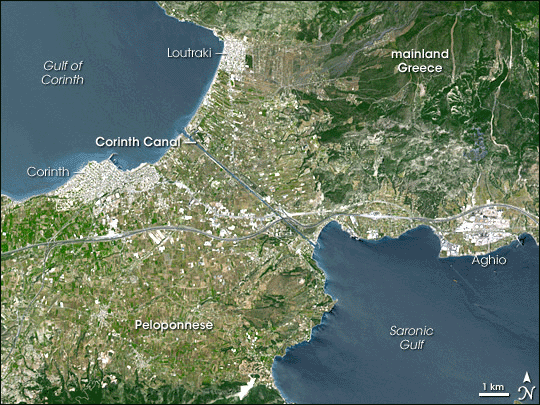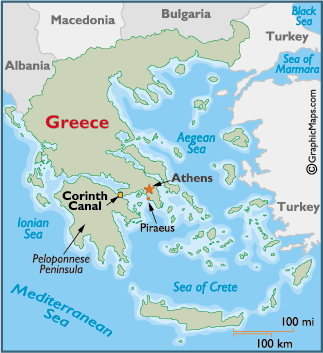We stayed in the Arethusa Hotel
Μητροπόλεως 6-8, Αθήνα 105 63, Greece.
Arethusa Hotel is centrally located next to Plaka, the scenic Old Town of Athens and stands within 50 metres from the Syntagma Metro Station.
It is a sort of a boutique hotel and the rooms are reasonably comfortable. The Acropolis, a 15-minute walk away. Ermou Street with many shopping facilities is nearby, 50 metres away.
The next morning, midi-bus came and picked us up in our hotel at about 8.30 am and we set off for the 4 Day Classic Greece Tour. First we set off for the Corinth Canal.
Μητροπόλεως 6-8, Αθήνα 105 63, Greece.
Arethusa Hotel is centrally located next to Plaka, the scenic Old Town of Athens and stands within 50 metres from the Syntagma Metro Station.
It is a sort of a boutique hotel and the rooms are reasonably comfortable. The Acropolis, a 15-minute walk away. Ermou Street with many shopping facilities is nearby, 50 metres away.
 |
| Entrance to the hotel. Source: booking.com |
Similar to the Panama Canal but on a much smaller scale, the Corinth Canal is between the Gulf of Corinth and the Saronic Gulf.
 |
| Use of the Canal started on Oct 28, 1893 |

Completed in 1893, this canal effectively makes the Peloponnese Peninsula an island. The canal is 3.9 miles (6.3 km) long and has a water depth of 26 feet (8 m). Its width varies from a minimum of 69 feet (21 m) at the bottom to 82 feet (25 m) maximum at the water's surface.
History of the Corinth Canal
Before it was built, ships sailing between the Aegean and Adriatic had to circumnavigate the Peloponnese adding about 185 nautical miles to their journey. The first to decide to dig the Corinth Canal was Periander, the tyrant of Corinth (602 BCE).
Such a giant project was above the technical capabilities of ancient times so Periander carried out another great project, the diolkós, a stone road, on which the ships were transferred on wheeled platforms from one sea to the other.
Dimitrios Poliorkitis, king of Macedon (c. 300 BCE), was the second who tried, but his engineers insisted that if the seas where connected, the more northerly Adriatic, mistakenly thought to be higher, would flood the more southern Aegean. At the time, it was also thought that Poseidon, god of the sea, opposed joining the Aegean and the Adriatic.
The same fear also stopped Julius Caesar and emperors Hadrian and Caligula.
The most serious try was that of Emperor Nero (67 CE). He had 6,000 slaves for the job. He started the work himself, digging with a golden hoe, while music was played. However, he was killed before the work could be completed.
In the modern era, the first who thought seriously to carry out the project was Capodistrias (c. 1830), first governor of Greece after the liberation from the Ottoman Turks. But the budget, estimated at 40 million French francs, was too much for the Greek state.
Finally, in 1869, the Parliament authorized the Government to grant a private company (Austrian General Etiene Tyrr) the privilege to construct the Canal of Corinth. Work began on Mar 29, 1882, but Tyrr's capital of 30 million francs proved to be insufficient.
The work was restarted in 1890, by a new Greek company (Andreas Syggros), with a capital of 5 million francs. The job was finally completed and regular use of the Canal started on Oct 28, 1893.
Here are some photos I captured.
 |
| The canal can bee seen from this bridge |
 |
| The canal is 3.9 miles (6.3 km) long |
 |
| Its width varies from a minimum of 69 feet (21 m) at the bottom to 82 feet (25 m) maximum at the water's surface. |
Our next destination is the Epidaurus theatre.
Go here to see My 5 day Greece vacation itinerary

May i know which tour agent u use for your day tour?
ReplyDeleteHi
ReplyDeleteI went with www.keytours.gr
Check out the link here: http://www.keytours.gr/tours/athens/four_day_classical_greece_tour_epidaurus_mycenae_olympia_delphi_meteora-34.html